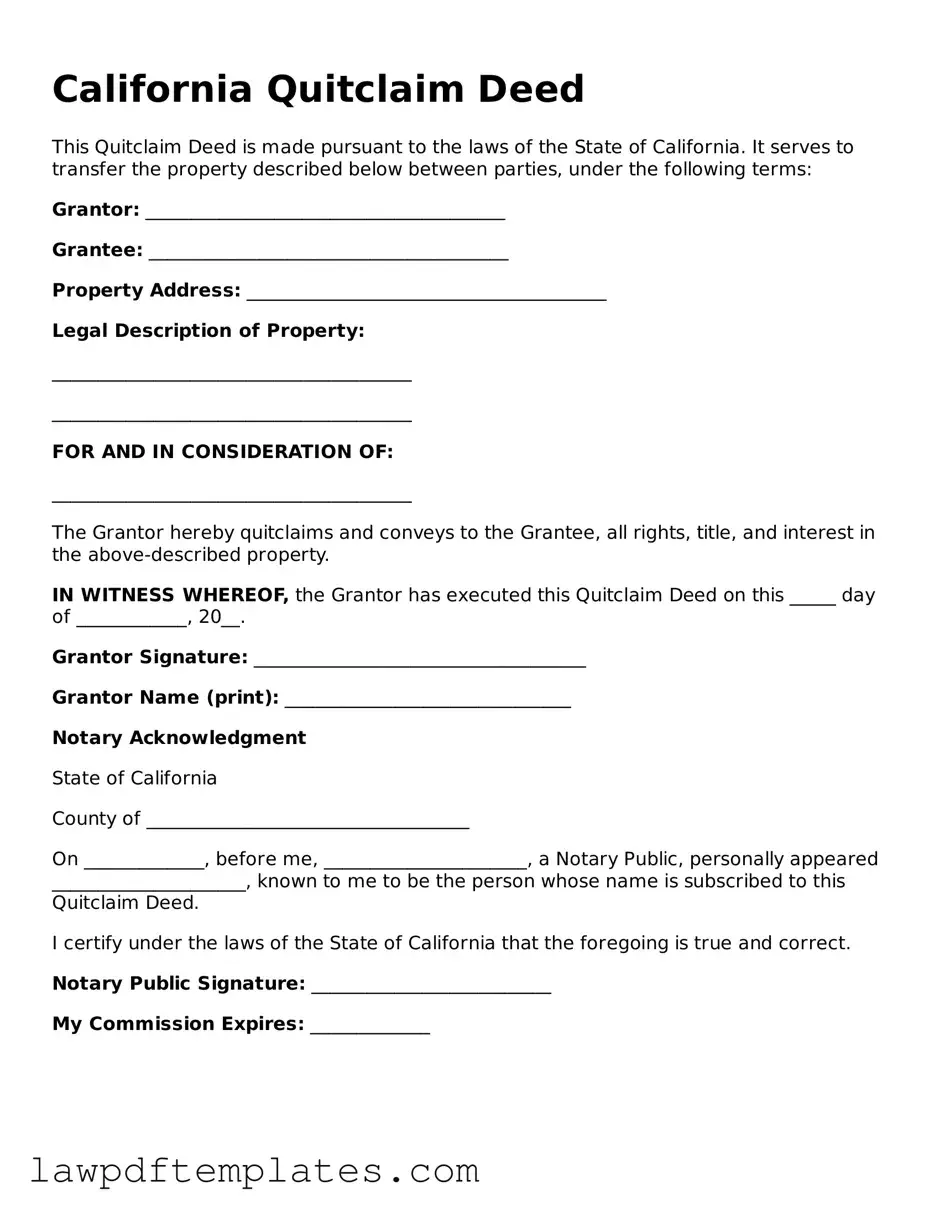California Quitclaim Deed
This Quitclaim Deed is made pursuant to the laws of the State of California. It serves to transfer the property described below between parties, under the following terms:
Grantor: _______________________________________
Grantee: _______________________________________
Property Address: _______________________________________
Legal Description of Property:
_______________________________________
_______________________________________
FOR AND IN CONSIDERATION OF:
_______________________________________
The Grantor hereby quitclaims and conveys to the Grantee, all rights, title, and interest in the above-described property.
IN WITNESS WHEREOF, the Grantor has executed this Quitclaim Deed on this _____ day of ____________, 20__.
Grantor Signature: ____________________________________
Grantor Name (print): _______________________________
Notary Acknowledgment
State of California
County of ___________________________________
On _____________, before me, ______________________, a Notary Public, personally appeared _____________________, known to me to be the person whose name is subscribed to this Quitclaim Deed.
I certify under the laws of the State of California that the foregoing is true and correct.
Notary Public Signature: __________________________
My Commission Expires: _____________
